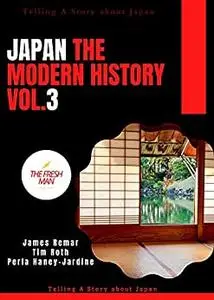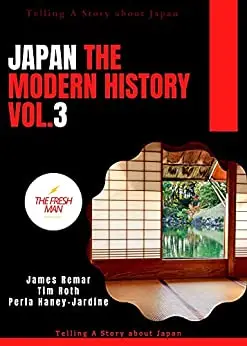Japan The Modern History vol.3: Telling A Story about Japan by James Remar
English | 2021 | ISBN: N/A | ASIN: B09CCMZBGN | 110 pages | EPUB | 0.29 Mb
English | 2021 | ISBN: N/A | ASIN: B09CCMZBGN | 110 pages | EPUB | 0.29 Mb
As mentioned in Chapter 4, at the beginning of the defeat, Article 9 of the Constitution was supported by the government and conservative politicians. The change in this situation and the formation of the opposition between the "constitutional amendment" and the "constitutional protection" faction occurred after the 1950s. This chapter will examine the discussion about the constitution and the peace between the emergence of the
issue of peace in 1950 and the establishment of the "Five-Year System" in 1955. [1]
From the beginning of its occupation of Japan, the United States has adopted a policy of completely dismantling Japanese armaments. However, as soon as the Korean War broke out in June 1950, in order to fill the "vacuum" left by the US troops stationed in Japan in North Korea, the Supreme Command of the Allied Forces in Japan ordered the Japanese government to establish a police reserve. At the same time, the United States adopted the policy of ending its occupation of Japan, letting Japan become independent, and nurturing it into an anti-common ally. Therefore, it is necessary for Japan to conclude a peace treaty with the countries participating in the war against Japan in World War II.
However, after the end of its occupation of Japan, the United States still hopes that Japan can become its own military base in the Far East. Therefore, in September 1951, at the same time as the "San Francisco Peace Treaty" was concluded, the "Japan-US Security Treaty" which allowed US troops to be stationed in Japan was signed. However, countries such as the Soviet Union, China, and India that opposed the US military stationed in Japan did not attend the meeting. And long before this peace meeting, it was affirmed that the "one-sided peace theory" of the US-led peace treaty and the "Japan-US Security Treaty" as opposed to the "comprehensive peace theory" that advocated peace including the Soviet Union and China. Although the proposal of the comprehensive peace theory is widely known, the object of this chapter is the peace talks of the intellectual group, and in these discussions, Article 9 of the Constitution has also received attention.
Feel Free to contact me for book requests, informations or feedbacks.
Without You And Your Support We Can’t Continue
Thanks For Buying Premium From My Links For Support
Without You And Your Support We Can’t Continue
Thanks For Buying Premium From My Links For Support



